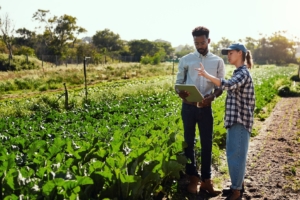The Impact Of Climate Change On Rural Communities In Canada

Climate change is one of the most pressing global issues of our time, and it is already having a significant impact on rural communities in Canada. Rising temperatures, changing precipitation patterns, and increased frequency and severity of extreme weather events are all affecting the lives and livelihoods of people living in rural areas.
Impact on Agriculture and Food Security
Climate change is affecting Canada’s agricultural sector in a number of ways, including changes in the timing of growing seasons, increased frequency of extreme weather events, and changes in pest and disease patterns. These changes have the potential to negatively impact crop yields and food security, particularly in rural areas where agriculture is a major source of livelihood.
According to a report by the Government of Canada, yields of important crops such as wheat and canola are projected to decrease by as much as 30% by the end of the century due to climate change.
Impact on Infrastructure and Property
Climate change is also affecting infrastructure and property in rural communities in Canada. Rising sea levels, for example, can damage coastal infrastructure and homes, while the increased frequency of extreme weather events such as floods and wildfires can also cause damage to buildings and roads.
In addition, changes in precipitation patterns can lead to water shortages and droughts, which can damage crops and make it more difficult for rural communities to access clean water.
Impact on Health and Well-being
Climate change can also have a negative impact on the health and well-being of people living in rural communities in Canada. This can include increased rates of heat-related illnesses, respiratory problems due to increased air pollution, and the spread of vector-borne diseases such as the West Nile virus and Lyme disease.
In addition, changes in precipitation patterns and water availability can also affect the health and well-being of rural communities by impacting access to clean water and increasing the risk of water-borne illnesses.
Adaptation and Solutions
Despite the challenges posed by climate change, rural communities in Canada are finding ways to adapt and mitigate its effects. One way is through the adoption of sustainable agricultural practices, such as crop diversification and the use of drought-resistant crops. This can help to increase resilience to changing weather patterns and reduce the impact of climate change on food security.
Another solution is through investment in infrastructure and building codes that are more resilient to climate change. This can include building homes and infrastructure on higher ground, designing buildings to better withstand extreme weather events, and investing in flood protection infrastructure.
Rural communities are also investing Rural communities in Canada are feeling the effects of climate change in various ways. Rising temperatures, more frequent and severe weather events, and changes in precipitation patterns are all having an impact on the country’s rural areas. The agriculture sector, for example, is being affected by changes in growing seasons and weather patterns that are making it more difficult for farmers to predict and plan for crop yields. These changes are also increasing the risk of wildfires, which can be devastating for rural communities.
In addition to the direct effects of climate change, rural communities are also being indirectly affected by the impacts of climate change in other parts of the country and the world. For example, changes in global weather patterns can affect the availability of water and food in other regions, which can in turn affect the prices of these goods in Canada. This can be particularly challenging for rural communities that are already facing economic challenges.
To address these issues, it is important for government, organizations and individuals to work together to develop and implement strategies that can help rural communities adapt to the impacts of climate change. This may include investing in infrastructure and technology that can help communities better prepare for and respond to extreme weather events, as well as providing support for farmers and other rural residents to make changes to their land use and farming practices that can help them adapt to changing conditions.





